This xBmt was completed by a member of The Brü Club in collaboration with Brülosophy as a part of The Brü Club xBmt Series. While members who choose to participate in this series generally take inspiration from Brülosophy, the bulk of design, writing, and editing is handled by members unless otherwise specified. Articles featured on Brulosophy.com are selected by The Brü Club leadership prior to being submitted for publication. Visit The Brü Club Facebook Group for more information on this series.
Author: Matt Skillstad
I like brewing and drinking NEIPA not only for its delicious hoppy, hazy goodness, but it’s also the first hop-forward style my wife has enjoyed as much as I do. In addition to copious amounts of delicious hops another key ingredient common to most NEIPA recipes is a fruity English ale yeast that complements the hop character.
I often rely on dry yeasts in by brewing for reasons including shelf-life, price, and general ease of use, but unfortunately, most of popular NEIPA strains are only available in liquid form. I’ve had decent results fermenting NEIPA with Safale S-04, a dry yeast of English origin that’s quite common for the style, but I was recently introduced to new strain that’s targeted specifically at this hazy style– LalBrew New England.
My experience with LalBrew New England has been very positive, to the point I convinced myself it was my preferred dry yeast for NEIPA despite having never done a side-by-side comparison. With the hope of settling this internal debate, I decided to put it to the test!
| PURPOSE |
To evaluate the differences between a NEIPA fermented with LalBrew New England yeast and the same beer fermented with Safale S-04 English Ale yeast.
| METHODS |
For this xBmt, I brewed up a variation of the All Together recipe with some adjustments for the ingredients I had on-hand.
Sprinkle Of Juice
Recipe Details
| Batch Size | Boil Time | IBU | SRM | Est. OG | Est. FG | ABV |
|---|---|---|---|---|---|---|
| 6 gal | 30 min | 20.3 IBUs | 4.3 SRM | 1.061 | 1.017 | 5.8 % |
| Actuals | 1.061 | 1.009 | 6.9 % | |||
Fermentables
| Name | Amount | % |
|---|---|---|
| Pale Malt (2 Row) US | 12.5 lbs | 84.03 |
| White Wheat Malt | 1.25 lbs | 8.4 |
| Oats, Flaked | 1.125 lbs | 7.56 |
Hops
| Name | Amount | Time | Use | Form | Alpha % |
|---|---|---|---|---|---|
| Columbus/Tomahawk/Zeus (CTZ) | 7 g | 30 min | Boil | Pellet | 17.3 |
| Simcoe | 42 g | 5 min | Aroma | Pellet | 13.9 |
| Cascade | 28 g | 5 min | Aroma | Pellet | 6.5 |
| Mosaic | 23 g | 5 min | Aroma | Pellet | 11.9 |
| Mosaic | 112 g | 4 days | Dry Hop | Pellet | 11.9 |
| Cascade | 56 g | 4 days | Dry Hop | Pellet | 6.5 |
| Simcoe | 50 g | 4 days | Dry Hop | Pellet | 13.9 |
| Citra | 35 g | 4 days | Dry Hop | Pellet | 12 |
Yeast
| Name | Lab | Attenuation | Temperature |
|---|---|---|---|
| LalBrew New England OR SafAle S-04 English Ale | 73% | 59°F - 75.2°F |
Notes
| Water Profile: Ca 111 | Mg 12 | Na 11 | SO4 36 | Cl 65 |
Download
| Download this recipe's BeerXML file |
The day before brewing, I weighed out and milled the grain for a 12 gallon/45 liter.
I then collected the full volume of water and adjusted it to my desired water profile before dropping in my electric element, which I plugged into a timer set to turn on a few hours before I planned to start brewing the next day.
The following morning, after using my burner to finish heating the water, I added the grains then checked to make sure it was at my target mash temperature of 154°F/68°C. Following a 45 minute mash rest, I hoisted the grain bag above the kettle and allowed it to drain as I began heating the sweet wort.
When the 40 minute boil was complete, I used my IC to quickly chill the wort.
A hydrometer measurement showed the wort was at 1.061 OG.
The wort was split evenly between two similar stainless steel fermentation vessels that were placed next to each other in my chamber controlled to 66°F/19°C. At this point, I sprinkled a pack of LalBrew New England yeast onto one batch while the other received Safale S-04 English Ale yeast.
I noticed signs of active fermentation the following morning and returned 2 days to add the dry hop charge, after which I raised the temperature to 68°F/20°C. After 4 more days on dry hops, 7 total since pitch, signs of fermentation were absent so I took hydrometer measurements showing both beers were at the same FG.
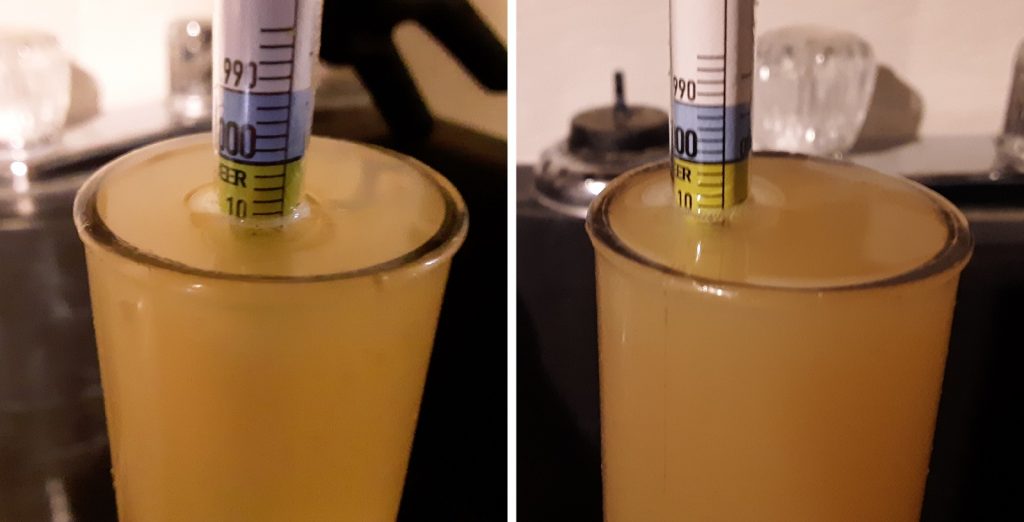
I proceeded to transfer the beers to sanitized and CO2 purged kegs.
The filled kegs were placed in my kegerator and burst carbonated overnight before I reduced the gas to serving pressure. After a week of conditioning, they were ready for evaluation.

| RESULTS |
Due to social distancing practices as a result of the COVID-19 pandemic, data for this xBmt was unable to be collected in our typical manner. As such, temporary adaptations were made involving the author completing multiple semi-blind triangle tests in as unbiased a way as possible.
Utilizing 4 opaque cups of the same color where 2 were inconspicuously marked, one set was filled with the beer fermented with LalBrew New England yeast while the other set was filled with the beer fermented with Safale S-04 English Ale yeast. For each triangle test, 3 of the 4 cups were indiscriminately selected, thus randomizing which beer was the unique sample for each trial. Following each attempt, I noted whether I was correct in identifying the unique sample. Out of the 9 semi-blind triangle tests I completed, I needed to identify the unique sample 6 times (p<0.05) in order to reach statistical significance, and that is exactly the number of times I did (p=0.042), indicating my ability to reliably distinguish a NEIPA fermented with LalBrew New England yeast from one fermented with Safale S-04 English Ale yeast.
I perceived the one fermented with LalBrew New England as having more tropical fruit character with notes of peach and mango alongside citrus and pine, while the Safale S-04 English Ale version had more of a clean lemon note with slightly muted hops and subtle “twang” I’ve come to associate with this yeast. My preference was for the beer fermented with LalBrew New England, as it had a stronger, juicier hop character that I expect in a NEIPA. However, my wife liked the Safale S-04 batch more, as she appreciated the cleaner citrus profile and, contrary to my opinion, thought it was more aromatic.
| DISCUSSION |
It’s a commonly held belief that the best NEIPA is made with yeast strains of English origin, most of which are currently only available in liquid form. This has left brewers who prefer the convenience of dry yeasts high and dry. Recently, yeast labs have released new strains marketed as being specifically for hazy hop bombs including LalBrew New England yeast. While some have positive this new yeast is similar, if not the same, as another popular dry yeast, Safale S-04 English Ale, my ability to reliably distinguish a NEIPA fermented with LelBrwe New England from one fermented with SafAle S-04 suggests otherwise.
Another claim that’s been made about LalBrew New England is that it’s a dried version of the very popular Boddington’s strain, which is available in liquid form as Imperial Yeast A38 Juice and Wyeast 1318 London Ale III. Seeing as tasters in a past xBmt were unable to tell apart a NEIPA fermented with Wyeast 1318 from one fermented with Safale S-04, it could be that LalBrew New England is a different strain than Wyeast 1318. That said, I perceived in the beer fermented with LalBrew New England many of the same characteristics I get in batches of NEIPA fermented with these 2 liquid strains. Finally, it goes without saying that my performance may very well have been influenced by my awareness of the variable and the way I self-administered the triangle test.
Based on this experience, I believe even more that LalBrew New England and Safale S-04 English Ale are distinct strains, the latter of which I felt contributed to a muted hop character. I rather strongly preferred the NEIPA fermented with LalBrew New England and look forward to seeing how it compares to other popular strains in the future.
 Matt Skillstad is a happy husband to a wonderful wife (who likes his beer!) and proud father of 5 young children from Pierce, Nebraska. He has been brewing since 2011 and, in addition to The Brü Club, is a member of the Elkhorn Valley Society of Brewers. He enjoys experimenting with his brewing in an effort to make better beer in less time with less effort. When not brewing or hanging with his family, Matt enjoys bike riding and golfing (poorly).
Matt Skillstad is a happy husband to a wonderful wife (who likes his beer!) and proud father of 5 young children from Pierce, Nebraska. He has been brewing since 2011 and, in addition to The Brü Club, is a member of the Elkhorn Valley Society of Brewers. He enjoys experimenting with his brewing in an effort to make better beer in less time with less effort. When not brewing or hanging with his family, Matt enjoys bike riding and golfing (poorly).
If you have any thoughts about this xBmt, please do not hesitate to share in the comments section below!
Support Brülosophy In Style!
All designs are available in various colors and sizes on Amazon!
Follow Brülosophy on:
FACEBOOK | TWITTER | INSTAGRAM
If you enjoy this stuff and feel compelled to support Brulosophy.com, please check out the Support page for details on how you can very easily do so. Thanks!



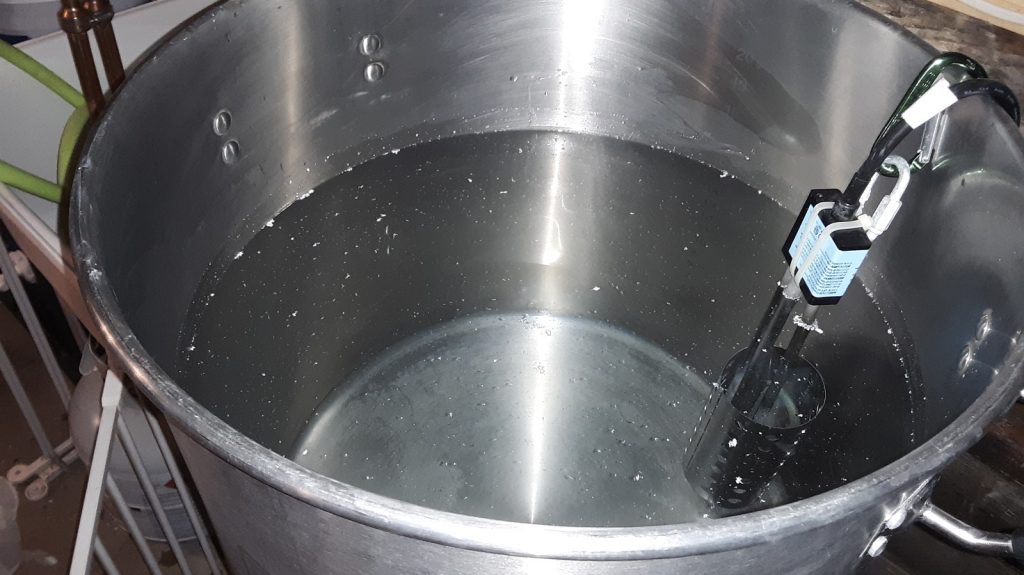
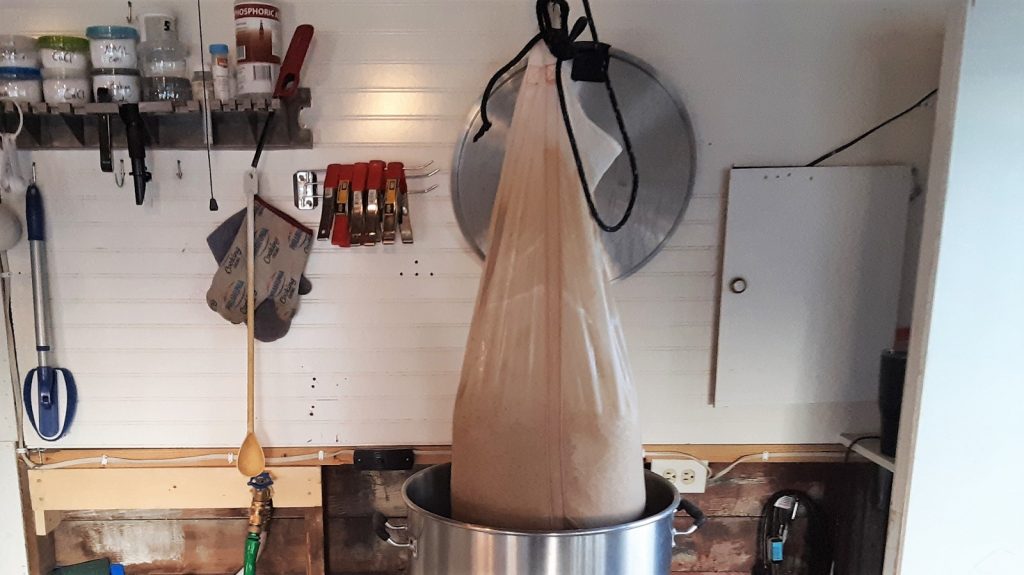
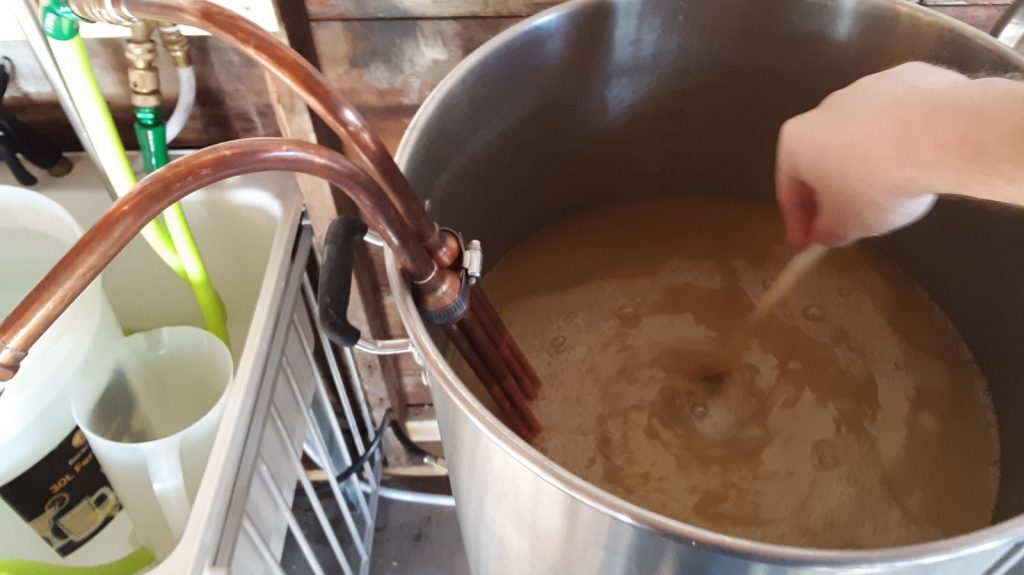
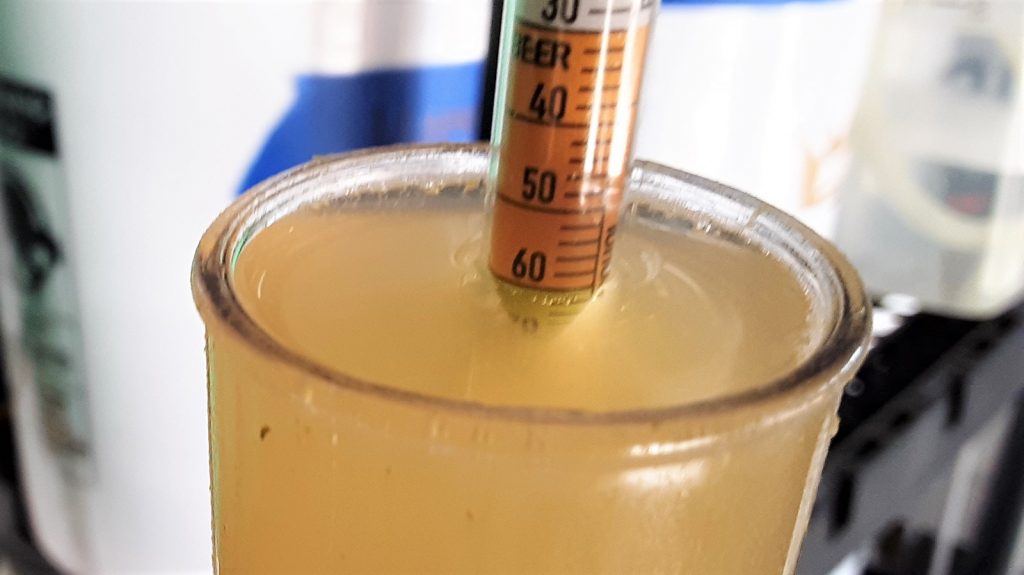













21 thoughts on “The Brü Club xBmt Series | Yeast Comparison: LalBrew New England vs. Safale S-04 English Ale In A Hazy IPA”
Thanks for this, very interesting. I have a NEIPA brewing with S-04 right now. I really was hoping for a tropical aroma – so maybe next time I will change up the yeast!
I’m keen to give the new Lalbrew Verdant strain a try as it’s supposed to have nice subtle vanilla flavour associated
Be prepared for noticeable twang
Great article, I really do appreciate the ease of using dry yeast but usually use liquid since the selection is so much better. On a side note, can you describe what’s going on with your keg transfer setup? I’ve never seen a direct gas connection from the fermenter to keg before.
Some people call it a closed loop transfer. It’s a way to do a closed transfer without using pressure. As the beer gravity drains to the keg it displaces the co2 in the purged keg & that flows up the gas line to fill the headspace in the fermenter.
I noticed this too and it looks awesome! I guess the CO2 from the purged keg is replacing the volume in the fermenter left by the beer flowing down to the keg. A great solution to keep at bay that ever present threat of cold side oxidation.
Nice test but I don’t think 6 out of 9 is significant. Could still be a good guess. Will be nice when you can once again test with larger groups. Also, LalBrew New England cost twice as much as S-04.
Don’t you think that the cost of the yeast is kind of negligible compared to the cost of hops in a NEIPA? After pouring a ton of money into hops I wouldn’t skimp on yeast if an extra $4 produced even marginally better results.
That’s a good point for sure! For me the preference for dry yeast is more out of convenience than price…. although I won’t complain about that 😉 dry yeast is nice for me because it lasts a long time & i don’t have to do a starter (like I would if liquid yeast is not fresh) so it allows me to be more flexible when i brew with less prep.
The nice thing about these xBmts being about beer and not something like cancer is that people can choose to interpret the results however they wish.
Using a one-tailed binomial proportions test, 6 correct selections out of 9 attempts is technically significant, as the p-value falls below the threshold we settled on of 0.05, but it’s perfectly within anyone’s right to choose to disregard that and go with a different threshold.
If one person do triangle test with two stouts and one lager and pick the right one 6 out of 9 times imply they are different?
With one person testing difference, it should be 9/9.
Nice write up.
LalBrew New England is thought to be a dried version of Conan, not London III.
LalBrew Verdant IPA is the one you’re looking for. This is supposed to be a dry version of a yeast of London III origin.
An Exbeeriment with Verdant IPA vs A38 Juice (+ vs LalBrew NE) would be very interesting.
The water profile looks incorrect. Based on the calcium value, the chloride concentration is probably meant to be 165ppm (and would be typical for a NEIPA).
Second the comment regarding Verdant IPA yeast, our initial testing indicates it is the best dried yeast we have tried yet in a hazy.
It’s tap water adjusted with calcium chloride & phosphoric acid. I just heard about verdant recently. I’m excited to give it a try once I can get ahold of it.
@Richard – sure, it would be better if we could get more tasters, but 6 of 9 is pretty convincing, That’s TWICE the rate of accuracy as random guessing. If you’ve ever done proper blind triangle testing before, it’s hard to tell differences, even if you try again after you know the variable.
What are the in-line devices between the fermenter out and the keg in?
They are generic versions of the bouncer mesh filter. I use them to catch loose dry hop particles so they don’t clog the keg poppets or qd’s. You can get them on Amazon.
Your FG was much less than expected. I am having the same issue. How is this solved?
Love the article.
We’ve brewed 4x a 2000L (500 gallons) batch with London Fog III and 3x a 2000L batch with Lallemand New England – same malts and 1 batch with the same hops.
We’ve found mayor differences in these two.
London III is more fruity, more stonefruits and rounder aftertaste.
Lallemand leaves it a bit dryer in mouthfeel (same FG) and more citrus.
The reason why we pay extra for London III and are switching 100% to it is because the hazyness stays in much much more cleanly and evenly. Even in the fridge just above freezing for a couple of weeks.
I would use Lallemand for a “normal” IPA though and filter it a bit better.
Thanks this is an interesting comparison, I haven’t used the New England yeast yet. I’d also like to see a comparison of the Lalbrew Verdant IPA yeast and Wyeast 1318, as I believe the Verdant strain originated as 1318 and has evolved via re-pitching the yeast in a brewery. Does this dried and mutated version match up to the popular liquid strain in terms of performance in a NEIPA? Or even in an English bitter. I have used the Verdant and early signs are very good, having sampled four beers I made with it now. But not a NEIPA yet!
Hi Matt! I’ve been using s-04 for NEIPA for the past 6 months with good clean results, but as an experiment, I did a 10 liter batch using Fermentis S-33. In my opinion, S-33 was way better in terms of mouthfeel and fruity tropical notes, but it required a lower mash temperature to have a lower FG because of the lower attenuation. I did a simple one step infusion at 64 C and it finished at 1.014. If you have the time, maybe you could do an experiment. I would love a second opinion. Cheers!
As far as I’ve read, Lallemand New England isn’t London Ale III(WY1318), it’s the ‘Conan’ strain from the Alchemist. Lallemand confirmed to me in an email that their Verdant IPA is virtually (only one band’s difference in genetic fingerprint) identical to London Ale III, and performs identically to it, with identical flavor profiles, etc.